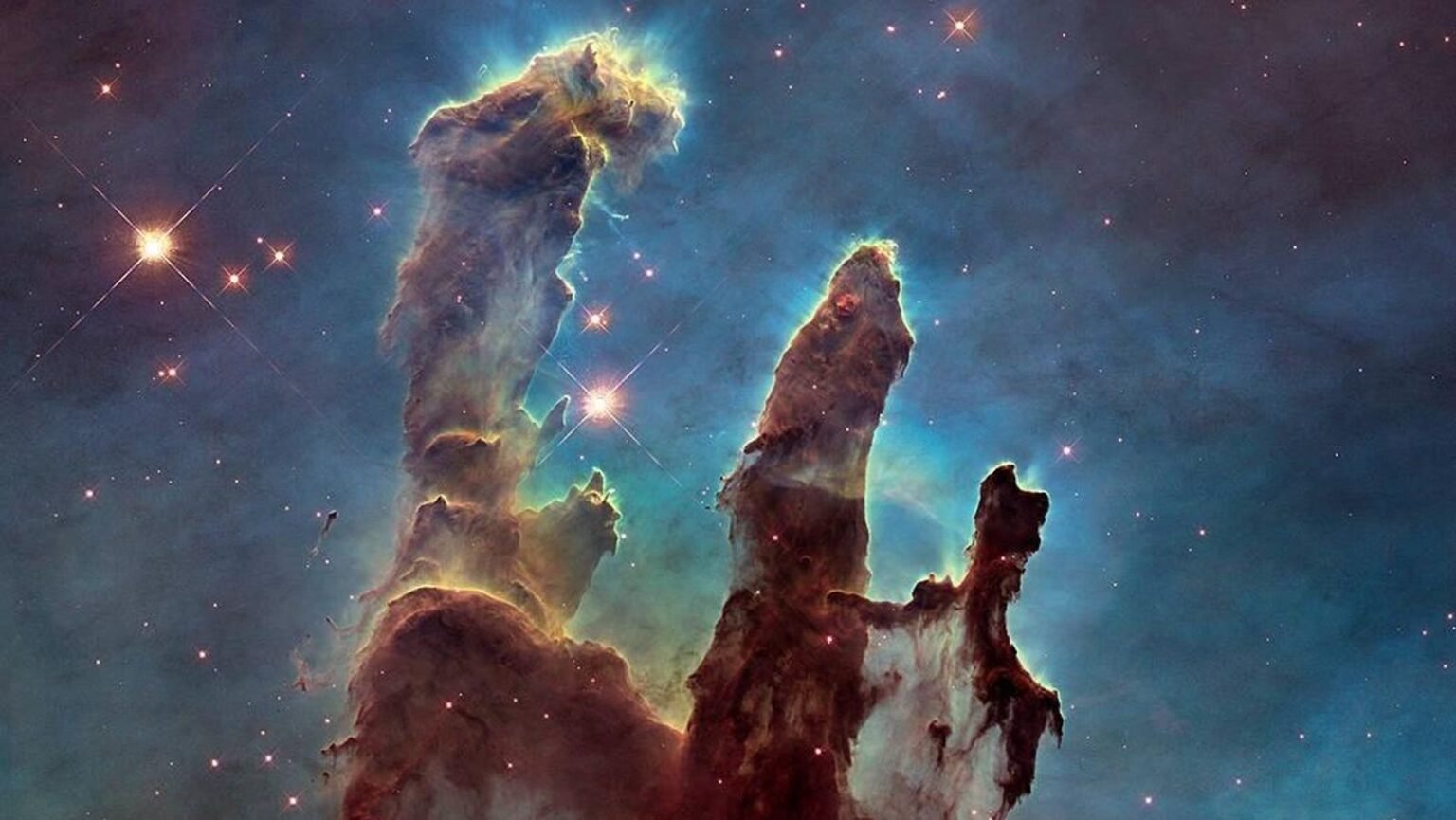NASA has recently released a stunning 3D visualization of the iconic Pillars of Creation located in the Eagle Nebula. This visualization uses data from both the Hubble Space Telescope and the James Webb Space Telescope to provide an immersive experience of these star-forming dust clouds. The video showcases the complementary nature of the two telescopes, with Hubble capturing the Pillars in visible light and Webb revealing them in infrared, allowing for a more comprehensive understanding of the region.
A companion video released by NASA takes viewers on a journey through the Eagle Nebula, offering context for the visualization and highlighting the scientific significance of the Pillars of Creation. From wide views of our Milky Way galaxy to up-close encounters with baby stars, the video integrates data from multiple telescopes to provide a detailed exploration of this famous cosmic formation.
Hubble, which has been in operation since 1990, first captured the Pillars of Creation in a now-famous image release in 1995. The telescope revisited the Pillars in 2015, and the newer James Webb Space Telescope followed suit in 2022. The Pillars of Creation have become a symbol of the beauty and complexity of the universe, with merchandise such as shirts, blankets, posters, and jigsaw puzzles featuring the image. NASA’s new 3D visualization offers a unique way for space enthusiasts to interact with this celestial wonder.
Despite facing challenges such as a recent gyroscope glitch, the Hubble Space Telescope continues to provide valuable insights into the workings of the universe. NASA’s latest visualization underscores the importance of Hubble in ongoing scientific investigations, particularly in understanding the formation of stars. While the James Webb Space Telescope offers newer technology and capabilities, it complements rather than replaces Hubble, allowing for more detailed observations of cosmic phenomena like the Pillars of Creation.
The collaboration between Hubble and Webb in creating the 3D visualization demonstrates the value of combining data from multiple telescopes to enhance our understanding of the universe. By leveraging Hubble’s long history of groundbreaking discoveries and Webb’s advanced capabilities, scientists are able to delve deeper into the mysteries of space. The 3D model created for the visualization also gives space fans the opportunity to print out their own version of the Pillars of Creation, further engaging the public in the wonders of the cosmos.
As Hubble potentially continues its mission well into the 2030s, it remains a vital tool for astronomers and researchers seeking to unlock the secrets of the universe. The unique perspective offered by NASA’s 3D visualization of the Pillars of Creation serves as a reminder of the importance of space exploration and the incredible beauty that exists beyond our own planet. By combining the strengths of both Hubble and Webb, scientists are able to paint a more complete picture of the cosmos and inspire awe and wonder in all who gaze at the stars.











